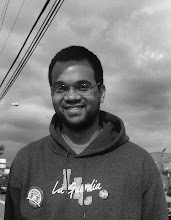Gnosticism has been, by far, the most difficult system (What's next!?) for me to grasp. The ideas it contains are quite complex.
I suppose that the simplest way to characterize it is as a type of religious order; one in which its disciples believe in a series of principles that, basically, suggest humans are not mere mortals, but rather luminary beings. These souls are, initially, restrained by the limitations of their imperfect surroundings; a material world crafted by an entity known only as, the demiurge. To the Gnostics, the representation of this spirit can be interpreted in a number of ways: the God of Abraham, evil-incarnate, or a benevolent but flawed being. The demiurge coexists with yet another mystical being, only this one possesses a divine intellect that symbolizes the good, and transcends the realities of the primitive world. In order to liberate one's self from these crude boundaries, they must come into the spiritual understanding of gnosis, available only through "direct experience" or a comprehension of God. There are different Gnostic sects who espouse the belief that Jesus Christ was either the, aforementioned, "supreme being" of divine knowledge, or simply a pedagogue of Gnostic beliefs.
While attempting to comprehend the meaning of Gnosticism has been challenging, establishing the relationships between Gnosticism, The Matrix, and Allegory of the Cave is far less so. Using the information from the Wikipedia article I read, and what I've come to learn about the religious and philosophical subtexts contained within The Matrix and Allegory of the Cave, I feel relatively confident in being able to make certain associations.
The "monadic" figure that is referred to in the article represents Neo, of The Matrix. If you were to look up the word monad (from which monadic is derived) in the dictionary, you would discover that the first definition listed is, "the number one." Neo's name is, simply, an anagram for the word, one. Throughout the movie, Neo is referred to by his colleagues as "the one." Therefore, we can deduce that Neo is the "supreme being" who, ultimately, actualizes his potential, but not before he transcends his antiquated knowledge of the facsimile (real) world in which he lived. The demiurge symbolizes the Matrix program, which is similar to the lower realm in Allegory. The "archons" of Gnosticism serve as the praetorian guards of the material world created by the demiurge. They are the counterparts of the Matrix's "agents" that work to oppose Neo, from achieving his divinity, and the other resistance members. The culmination of these events, when based on the Gnostic beliefs, is the restoration of the world and its souls, through the spiritual awakening of the luminary being.

6 comments:
in myopinion you've really linked these two perfectly. everything from the matrix itself to the monadic figure and what that represents. these ideas are all really insightful.
Definitely killed it bro I need to write like this! Where is my dictionary! Great job!
Thanks for the kind words, fellas. I hope to be able to read your respective entries, soon.
HEY BRANDON!!! I LIKE THE WAY YOU DESCRIBE THE WORD MONAD- TO ONE AND THAT NEO IN THE MOVIE MATRIX WAS CALLED "THE ONE." THAT IS GREAT!!!!!
Great job with your blog.. i underwstand you more than the page on wikipedia. it is true gnosticism is indeed a very complex.
hey brandon, forreal i needa do what you are doing. you have great perspectives and a great way of putting them into words, you really do! can't await for week 4 blog lol
Post a Comment